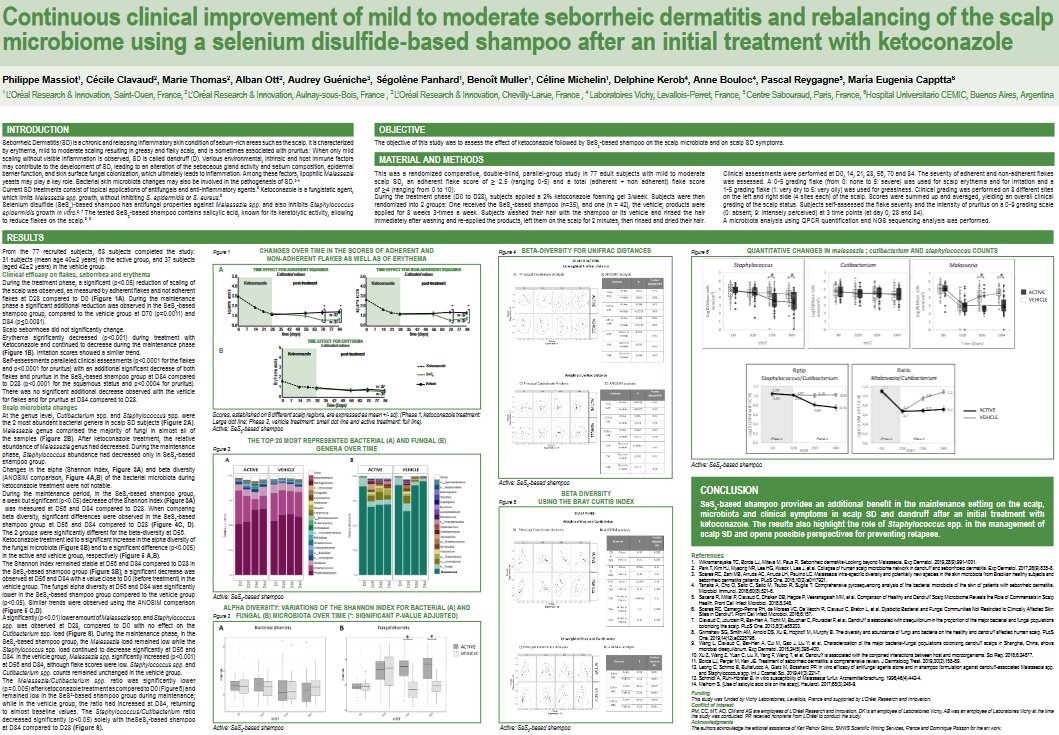









INTRODUCTION
SeborrheicDermatitis (SD)is a chronic and relapsing inflammatory skin condition of sebum-rich areas such as the scalp.It is characterized by erythema, mild to moderate scaling resulting in greasy and flaky scalp, and is sometimes associated with pruritus.1 When only mild scaling without visible inflammation is observed, SD is called dandruff (D). Various environmental, intrinsic and host immune factors may contribute to the development of SD, leading to an alteration of the sebaceous gland activity and sebum composition, epidermal barrier function, and skin surface fungal colonization, which ultimately leads to inflammation. Among these factors, lipophilic Malassezia yeasts may play a key role. Bacterial skin microbiota changes may also be involved in the pathogenesis of SD.2-4